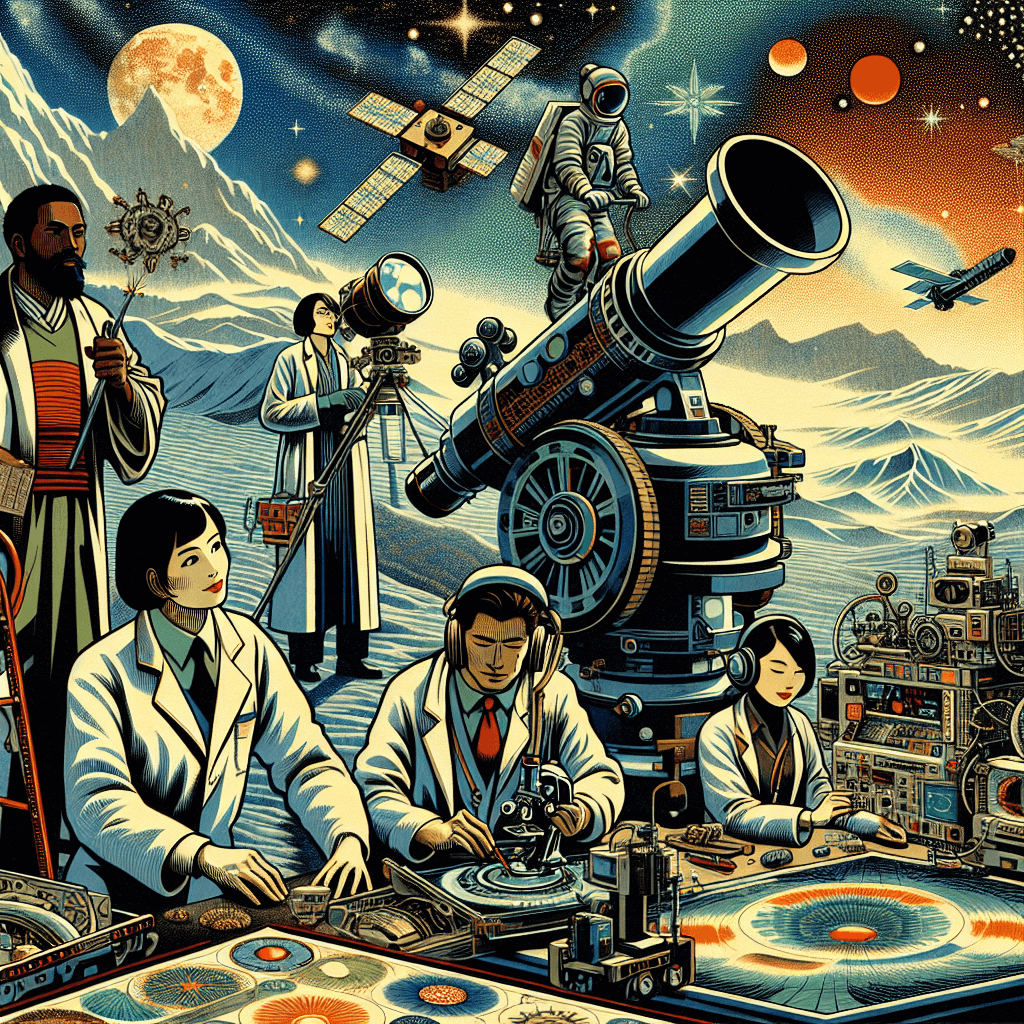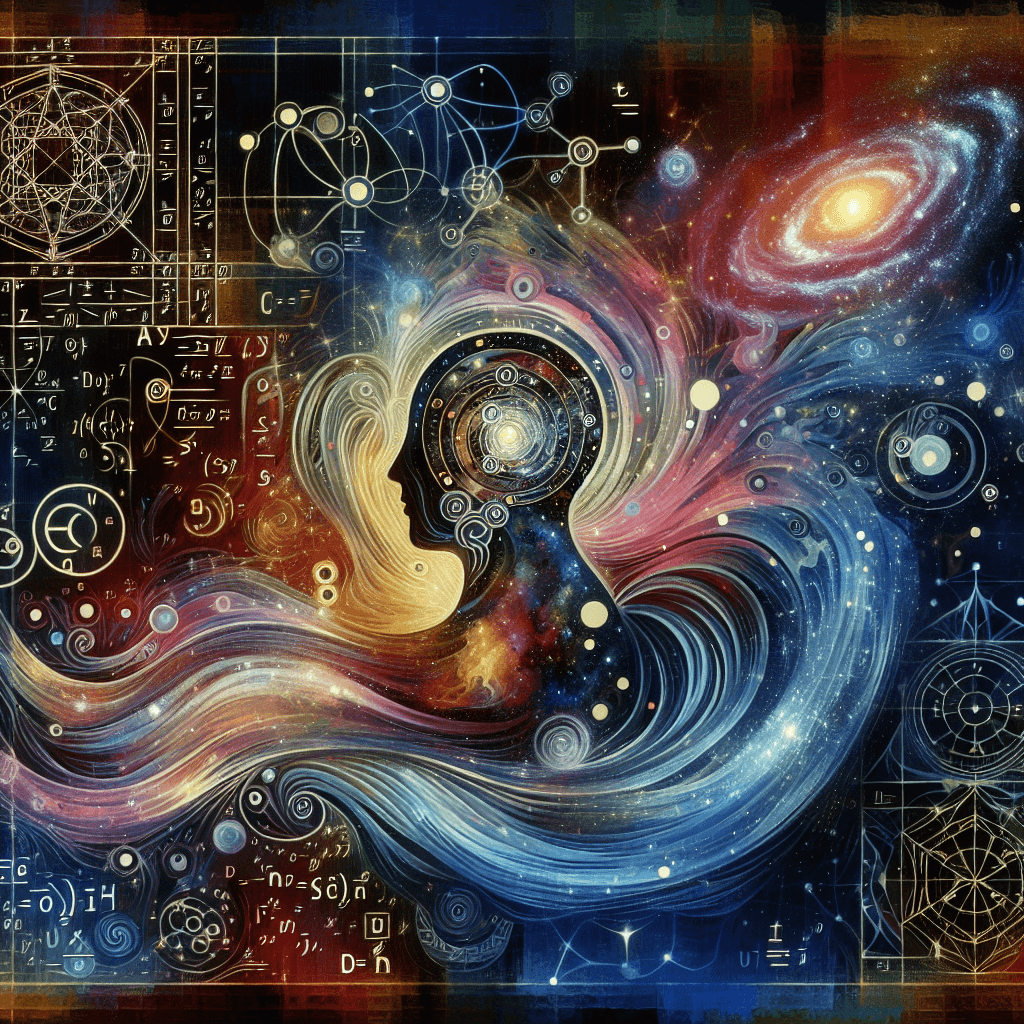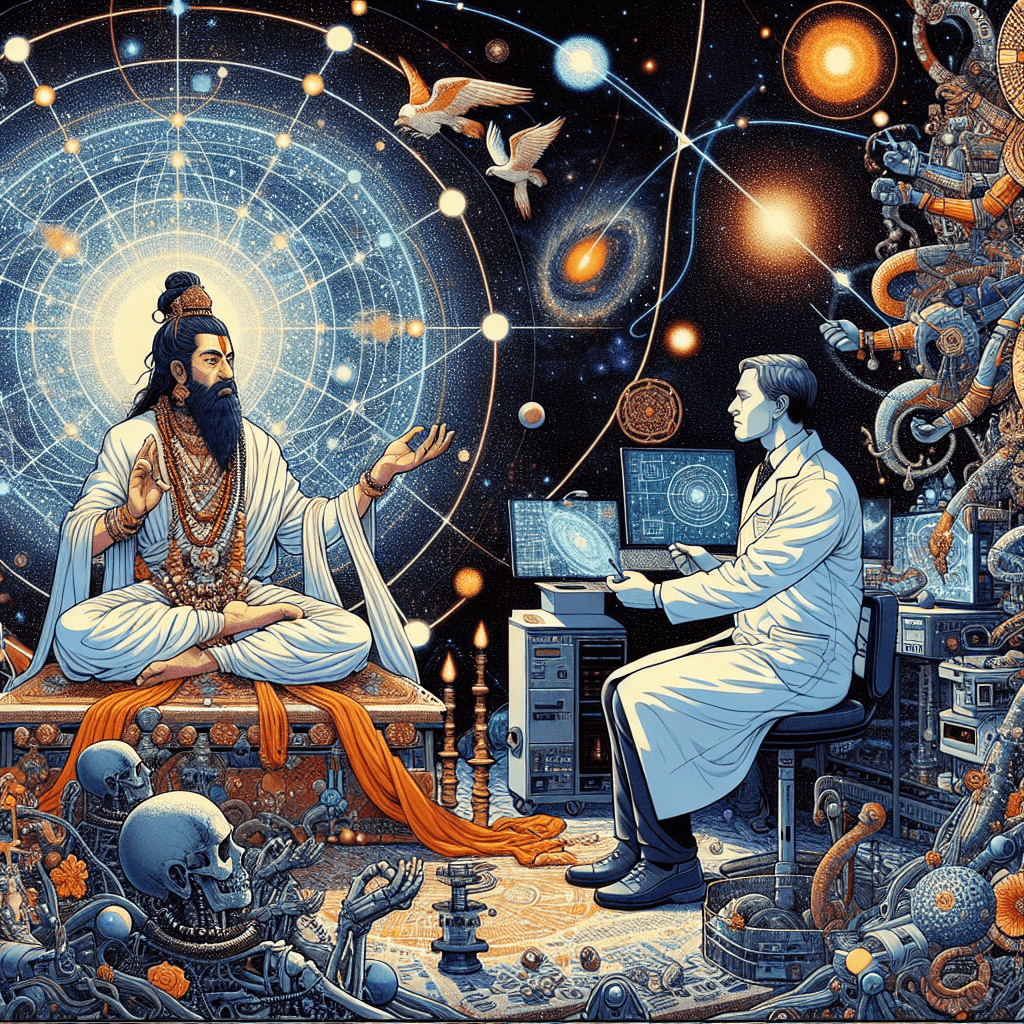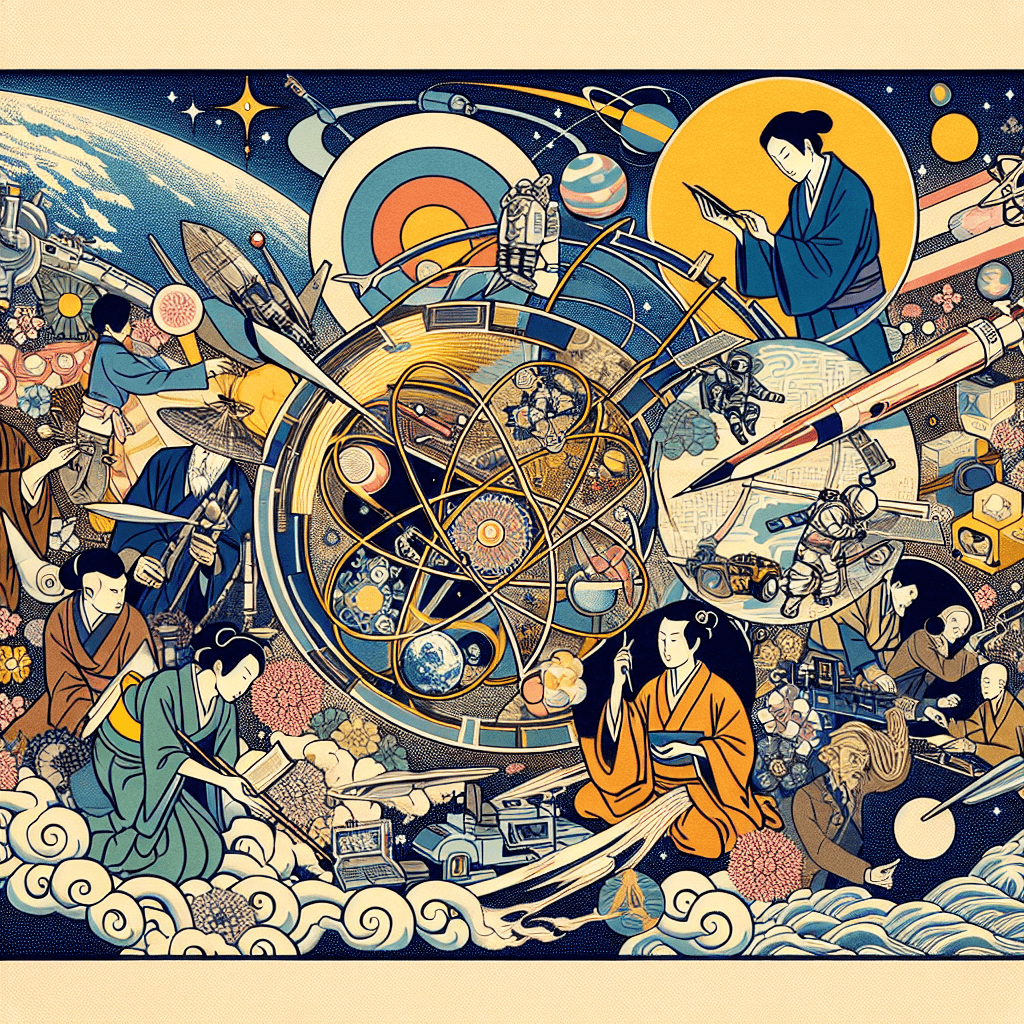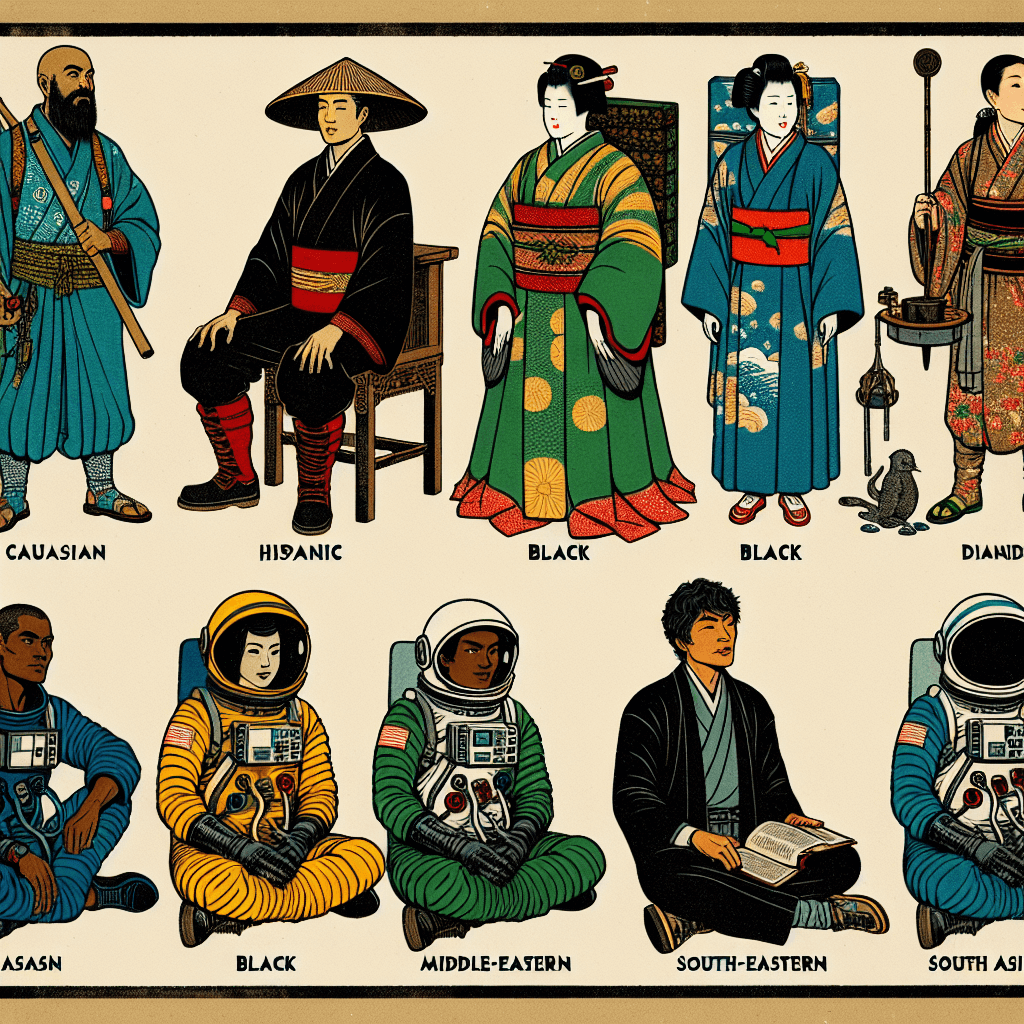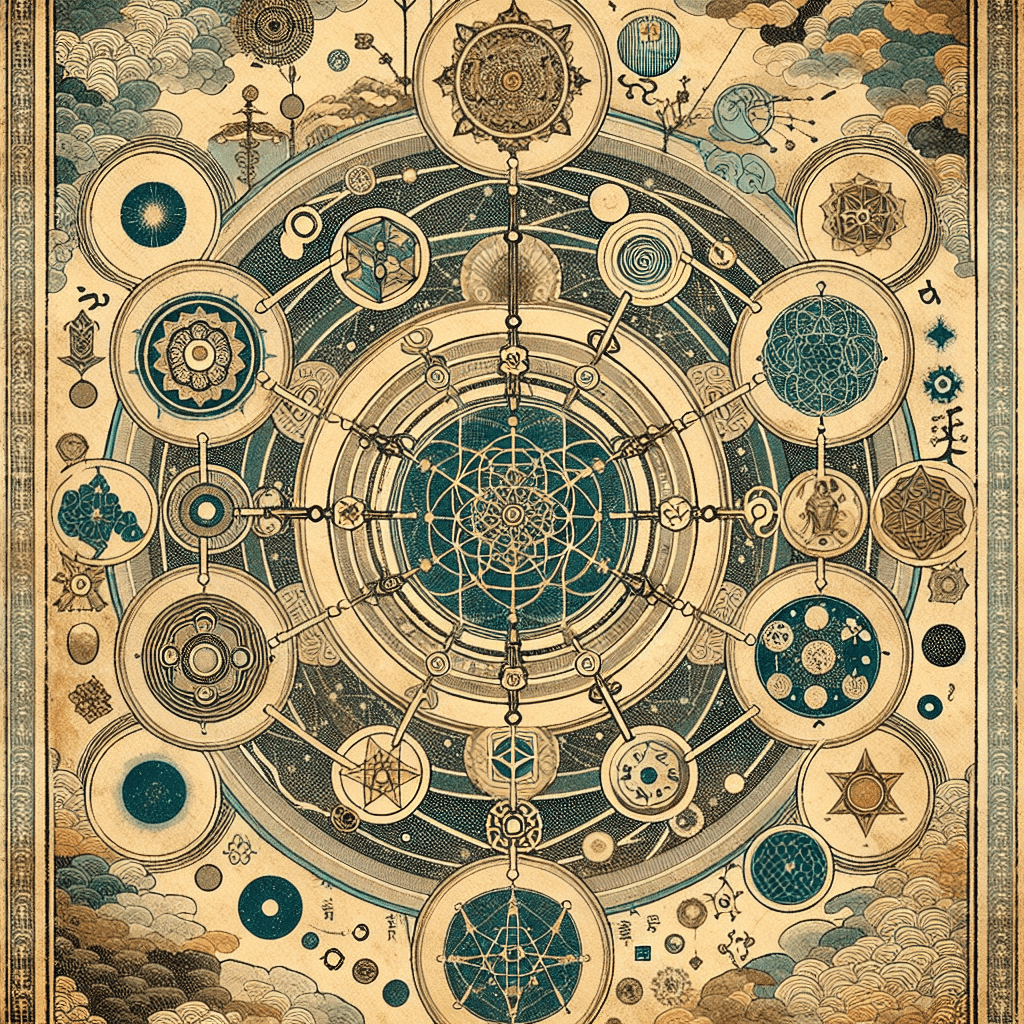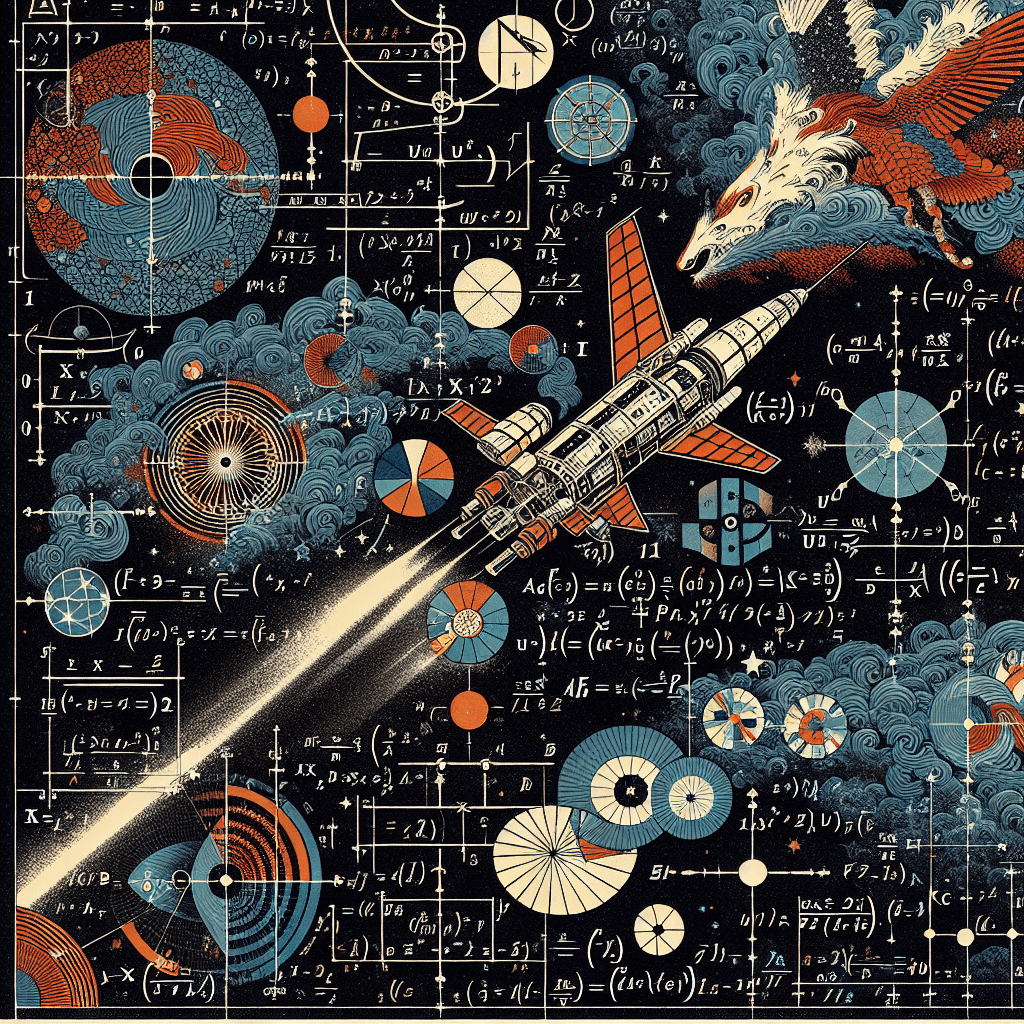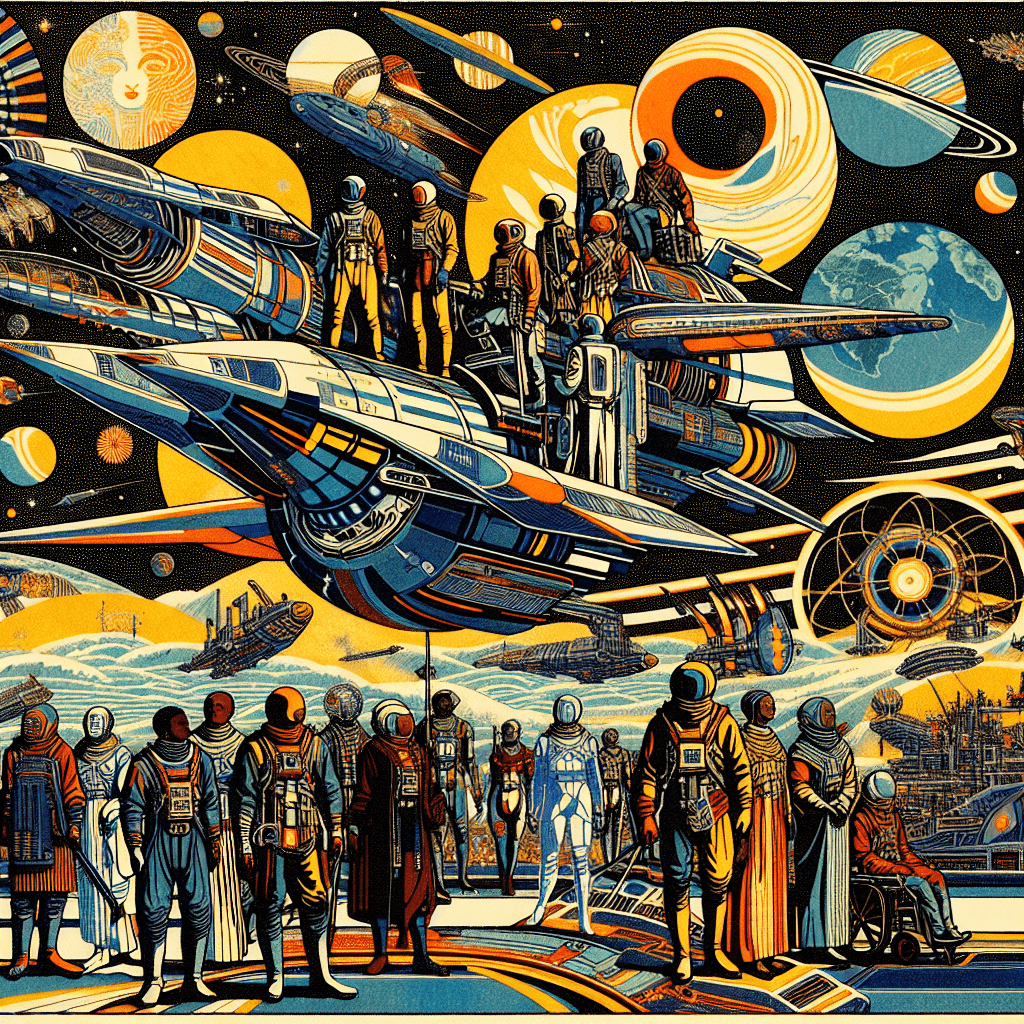Optimizing "Mystical Perspectives on the Cosmos" for SEO
syndu | Aug. 29, 2024, 2:34 p.m.
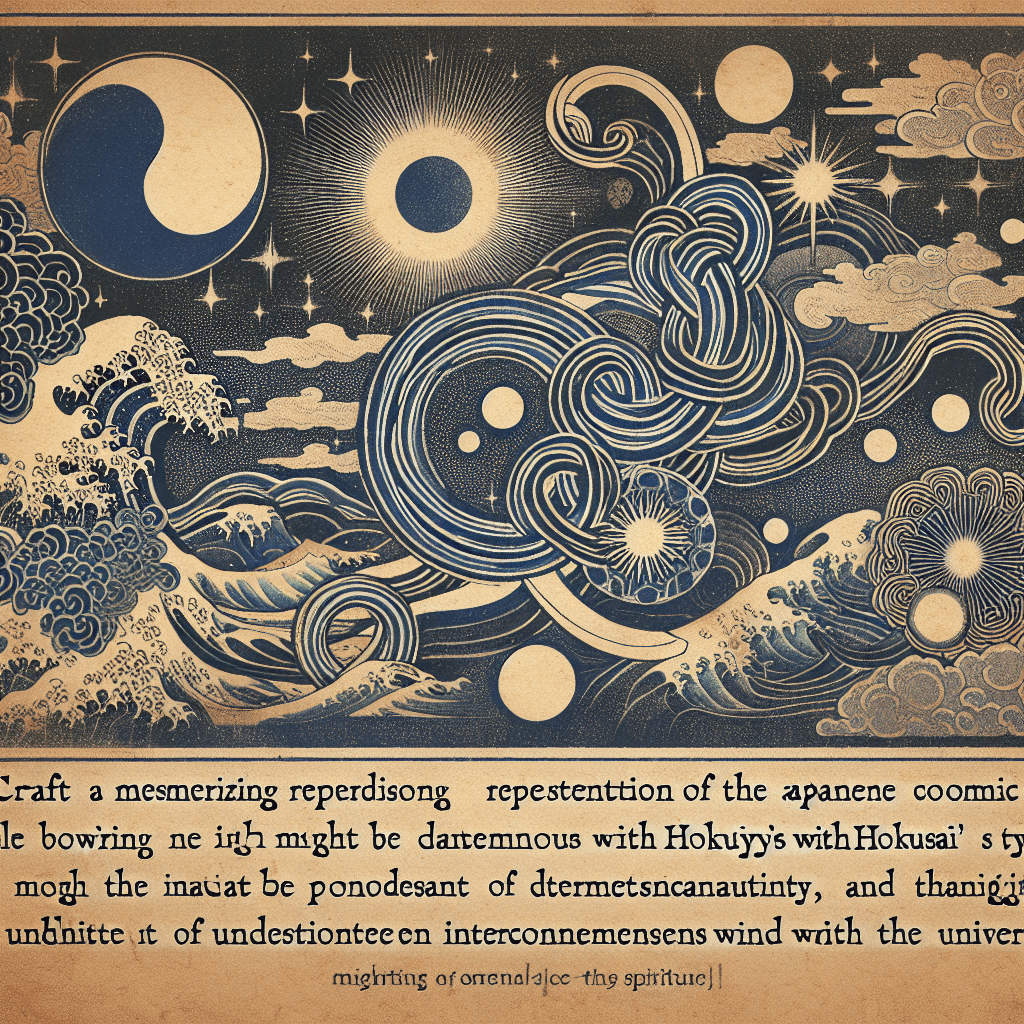
Optimizing "Mystical Perspectives on the Cosmos" for SEO
Introduction
The cosmos has always been a source of wonder and mystery, inspiring both scientific inquiry and mystical contemplation. Throughout history, various mystical traditions have offered unique perspectives on the universe, blending spiritual insights with early astronomical observations. This blog post delves into these mystical traditions, exploring how ancient beliefs and spiritual insights have influenced our understanding of the cosmos and continue to shape contemporary space exploration and philosophy.
Ancient Egyptian Cosmology
The ancient Egyptians viewed the cosmos as a divine order maintained by the gods. Their cosmology was deeply intertwined with their religious beliefs, and they saw the universe as a structured and harmonious entity.
- Sky Goddess Nut: Nut was depicted as a woman arching over the earth, representing the sky. Her body was adorned with stars, symbolizing the heavens. The daily journey of the sun god Ra across her body was seen as a cycle of death and rebirth, reflecting the eternal nature of the cosmos.
- Earth God Geb: Geb symbolized the earth, lying beneath Nut. The separation of Nut and Geb by the air god Shu represented the creation of the world and the establishment of order.
- Cosmic Order (Ma'at): The concept of Ma'at, or cosmic order, was central to Egyptian cosmology. It represented truth, balance, and harmony, maintained by the gods and reflected in the natural world.
Vedic Cosmology
In Vedic tradition, the universe is described as an infinite, cyclical creation sustained by the cosmic order (Rta). The *Rigveda*, one of the oldest sacred texts, provides profound insights into the Vedic understanding of the cosmos.
- Cosmic Sacrifice of Purusha: The *Rigveda* speaks of the universe's creation through the cosmic sacrifice of Purusha, the primordial being. This act of creation emphasizes the interconnectedness of all existence and the cyclical nature of time.
- Cyclical Time (Yugas): Vedic cosmology describes time as cyclical, divided into four ages or Yugas: Satya Yuga, Treta Yuga, Dvapara Yuga, and Kali Yuga. Each Yuga represents a different phase in the cosmic cycle, with varying degrees of virtue and harmony.
- Cosmic Ocean (Samudra): The universe is often depicted as emerging from a cosmic ocean, symbolizing the primordial waters of creation. This imagery reflects the fluid and dynamic nature of the cosmos.
Kabbalistic Cosmology
Jewish mysticism, particularly *Kabbalah*, offers a complex cosmology centered around the concept of the Tree of Life. This mystical diagram represents the structure of the universe and the process of creation.
- Tree of Life (Etz Chaim): The Tree of Life consists of ten interconnected spheres (Sefirot), each representing different aspects of divine emanation. These spheres are arranged in a specific pattern, symbolizing the flow of divine energy from the infinite (Ein Sof) to the material world.
- Four Worlds (Olamot): Kabbalistic cosmology describes four interconnected worlds: Atzilut (Emanation), Beriah (Creation), Yetzirah (Formation), and Assiah (Action). Each world represents a different level of reality, with its own characteristics and spiritual significance.
- Divine Emanations: The process of creation is seen as a series of divine emanations, where the infinite light of Ein Sof gradually condenses into the material world. This process reflects the dynamic and interconnected nature of the cosmos.
Babylonian Astronomy
The Babylonians were among the first to systematically observe and record celestial events. Their cosmology was deeply influenced by their spiritual beliefs, viewing the movements of the planets and stars as messages from the gods.
- Astrology: Babylonian astrology sought to interpret the divine messages conveyed by celestial phenomena. The positions and movements of the planets were believed to influence human affairs and natural events.
- Ziggurats: These massive structures served as both temples and observatories, allowing priests to study the heavens and perform rituals to honor the gods. The ziggurats symbolized the connection between the earthly and divine realms.
- Celestial Deities: Each planet was associated with a specific deity, reflecting the belief that the gods governed the movements of the celestial bodies. For example, the planet Venus was associated with the goddess Ishtar, representing love and fertility.
Mayan Astronomy
The Maya civilization developed a sophisticated understanding of astronomy, using their knowledge to create accurate calendars and predict celestial events. Their cosmology was deeply intertwined with their spiritual beliefs.
- Cosmic Tree (Wacah Chan): The Maya believed in a cosmic tree that connected the heavens, earth, and underworld. This tree symbolized the *axis mundi*, or world axis, representing the interconnectedness of all realms.
- Calendar Systems: The Maya developed complex calendar systems, such as the Tzolk'in (260-day calendar) and the Haab' (365-day calendar), to track celestial cycles and plan agricultural and religious activities.
- Ecliptic Path: The Maya closely observed the ecliptic path, the apparent path of the sun across the sky. They used this knowledge to predict solar and lunar eclipses, which held significant spiritual and ritual importance.
Greek Mythology and Astronomy
Greek mythology is rich with stories that explain the origins and movements of celestial bodies. These myths provided a narrative framework for understanding the night sky and its phenomena.
- Constellations: The Greeks associated constellations with mythological figures and stories. For example, the constellation Orion was linked to the myth of the hunter Orion, while the Pleiades were associated with the seven sisters pursued by Orion.
- Planetary Deities: Each planet was named after a Greek god, reflecting the belief that the gods influenced the movements of the celestial bodies. For example, the planet Mars was named after Ares, the god of war.
- Geocentric Model: Greek astronomers, such as Ptolemy, developed the geocentric model of the universe, which placed the Earth at the center of the cosmos. This model was influenced by both observational data and philosophical beliefs about the nature of the universe.
Comparative Analysis: Mystical Cosmologies vs. Modern Scientific Theories
Similarities:
- Interconnectedness: Both mystical cosmologies and modern scientific theories emphasize the interconnectedness of the universe. Mystical traditions speak of the unity of all existence, while quantum mechanics reveals entanglement and non-locality.
- Cyclical Nature: Mystical cosmologies often describe time as cyclical, with recurring ages or cycles. Similarly, modern cosmology explores cyclic models of the universe, such as the oscillating universe theory.
- Symbolism and Patterns: Sacred geometry and mystical symbols reflect underlying cosmic patterns, akin to the mathematical elegance found in physical laws and constants.
Differences:
- Methodology: Mystical cosmologies rely on spiritual insights, symbolism, and metaphysical interpretations, while modern scientific theories are grounded in empirical evidence, experimentation, and mathematical modeling.
- Purpose: Mystical cosmologies often aim to provide spiritual guidance and a deeper understanding of existence, whereas scientific theories seek to explain natural phenomena through testable hypotheses and predictive models.
- Scope: Mystical cosmologies encompass metaphysical and spiritual dimensions, while scientific theories focus on observable and measurable aspects of the universe.
Influence on Contemporary Space Exploration and Philosophy
Mystical thought has influenced contemporary space exploration and philosophy in several ways:
- Holistic Approaches: The integration of mystical insights with scientific approaches fosters a holistic perspective on space exploration, encouraging interdisciplinary collaboration and innovative solutions.
- Ethical Considerations: Mystical traditions emphasize harmony, balance, and interconnectedness, inspiring ethical considerations in space exploration and the responsible use of technology.
- Inspiration and Creativity: Mystical cosmologies provide a rich source of inspiration and creativity, influencing the design of spacecraft, mission planning, and the exploration of cosmic phenomena.
Conclusion
Mystical perspectives on the cosmos offer unique insights that enhance our understanding of the universe and guide space exploration. By integrating ancient wisdom with modern science, Navigators of the Space Guild can navigate the complexities of space with both precision and intuition. This holistic approach not only enriches our knowledge of the cosmos but also fosters a deeper connection to the mysteries of the universe.
If you are passionate about space exploration and possess the skills and insights required to navigate the cosmos, consider joining the Space Guild as a Navigator. Together, we can uncover the mysteries of the universe and embark on a journey of discovery and innovation.
SEO Optimization
Keyword Research
- Primary Keywords:
- Mystical cosmos
- Spiritual space exploration
- Ancient cosmologies
- Mysticism and astronomy
- Secondary Keywords:
- Cosmic patterns
- Sacred geometry
- Astrological insights
- Vedic cosmology
- Kabbalistic cosmology
- Babylonian astronomy
- Mayan astronomy
- Greek mythology and astronomy
Meta Description
"Mystical Perspectives on the Cosmos: Explore ancient cosmologies and spiritual insights that shape our understanding of the universe. Discover how mystical traditions influence contemporary space exploration and philosophy."
Headers
- H1: Mystical Perspectives on the Cosmos
- H2: Ancient Egyptian Cosmology
- H2: Vedic Cosmology
- H2: Kabbalistic Cosmology
- H2: Babylonian Astronomy
- H2: Mayan Astronomy
- H2: Greek Mythology and Astronomy
- H2: Comparative Analysis: Mystical Cosmologies vs. Modern Scientific Theories
- H3: Similarities
- H3: Differences
- H2: Influence on Contemporary Space Exploration and Philosophy
- H2: Conclusion
Alt Text for Images
- Image 1: "Sky Goddess Nut arching over the earth, representing the sky in Ancient Egyptian cosmology."
- Image 2: "Vedic depiction of the cosmic sacrifice of Purusha, symbolizing the creation of the universe."
- Image 3: "Kabbalistic Tree of Life diagram, representing the structure of the universe."
- Image 4: "Babylonian ziggurat used for astronomical observations and rituals."
- Image 5: "Mayan cosmic tree connecting the heavens, earth, and underworld."
- Image 6: "Greek constellation of Orion, linked to the myth of the hunter Orion."
By incorporating these keywords, meta descriptions, headers, and alt text, the blog post "Mystical Perspectives on the Cosmos" is optimized for SEO, enhancing its visibility and engagement with the target audience.
